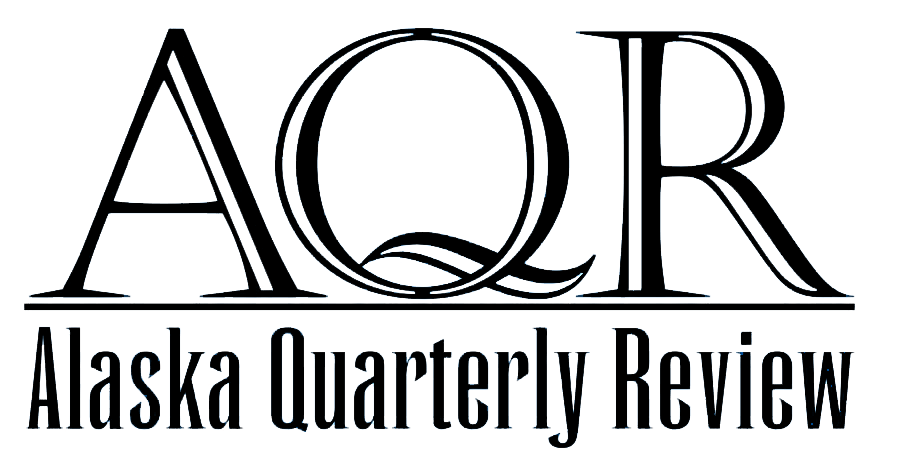EDITOR’S NOTE by Ronald Spatz
Since 2016 we have edged closer and closer to an unprecedented post-truth era in the governance of our country. Driven by greed and a confluence of cynical ideologies, politicians and their media enablers have been unrelenting in spreading falsehoods. They have attacked the institutions of our republic along with long-accepted norms of democratic society. At every turn, they have delegitimized expertise and scholarship across the disciplines in order to render fact as mere opinion in service of “elitist” agendas.
All of us are targeted in one way or another; our online activities are increasingly tracked. To protect ourselves from disinformation we are advised to ”know our algorithm.” This might help us weed out the fake news attempting to influence us, but it would do little to find larger truths or to create opportunities for compassion and empathy.
In my 1989 interview (Vol. 7 No. 3 & 4) with Grace Paley, Alaska Quarterly Review’s late contributing editor, we discussed her philosophy as a writer. “(Writing) works” she said, “as a means towards uncovering what is unknown . . . to come eventually to some kind of compassion or some kind of understanding or even some kind of justice. A way of saying, Look, you didn’t look at this life. Look at it. Almost all writing when it’s good says something like that. Look at this life. You think you know it, but here it is. This is what it’s really like.”
Each of the essays, stories, and poems in this edition is about a certain truth and, by extension, about the experiential and revelatory qualities that express fundamental human values. Ultimately, that’s why the literary arts (and all arts) matter. These works join us to each other and help us understand who we are as human beings, warts and all. This unvarnished view is essential “to experiencing different ways of seeing and thinking about life,” writes Don Ball of the National Endowment for the Arts, to see where we’ve been, singly and collectively. The literary arts help us overcome an inherent myopic tribal nature, whether it be based on national, racial, ethnic, religious, or sexual identities, in order to forge the connections that come from the shared experiences that are created. That body of work is a reservoir of truth that is critical to our understanding of social justice and human liberty. The stakes could not be higher or the need more urgent.
With our vantage point here at the top of the world, Alaska Quarterly Review has always sought to connect Alaska to the rest of the United States as well as to the global literary community. But our borders define us more by what they encompass than what they keep out. Reflective of the U.S. as a diverse nation, 100 languages are spoken by children in the Anchorage School District. Alaska is also particularly rich in Native culture and heritage. Twenty distinct Native languages are spoken here although, sadly, a number of those languages no longer have any native speakers. Across our eastern and southern borders into Canada, more than 70 Indigenous languages are spoken, and significant connections exist between Alaska Native cultures and those of the Indigenous cultures of Canada.
We are pleased to highlight our relationship with Canada in this edition’s special feature, “Carrying the Fire: Celebrating the Indigenous Voices of Canada.” We had the honor to collaborate with the founders of the Canadian Indigenous Voices Awards (IVA), a program that was established to support and nurture the work of Indigenous writers in lands claimed by Canada. Included in this literary anthology are the selected works of winners and finalists from IVA’s inaugural year, 2018. The five co‑editors introduce and contextualize the awards program and the selections in their interlogue.
I do want to note a couple of editorial decisions. The lead poem is written in Cree and was translated by the author, Mika Lafond. The original Cree and the English translation are presented on facing pages. Also selected for inclusion are three works originally written in French. The work of J. D. Kurtness is presented in its entirety in French and is then followed by its translation by Pablo Strauss. The works by Marie-Andrée Gill and Naomi Fontaine are not accompanied by an English translation. Canada’s “official bilingualism” protects the linguistic rights of English and French-speaking minorities in the different provinces. While we recognize that some readers will not be able to read the original Cree or the French, we believe it is essential nonetheless to include them as they were written; culture and heritage are fostered and shared by their publication. These primary texts emphasize the distinctiveness of the writers and their respective literary traditions and heritages, and this in our view more accurately reflects the nature and categories of the awards.
Finally, we wish to express our admiration and gratitude to the Indigenous language speakers and tradition bearers in Canada and Alaska, and throughout the world, who keep their cultures alive through their stories and words. In a very real sense, language is inseparable from the truth, how we think and who we are as human beings.
Ronald Spatz
Co-Founding Editor and Editor‑in‑Chief
Alaska Quarterly Review
